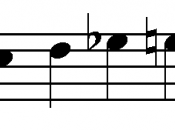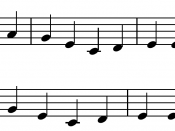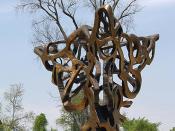This movement is called 'Introduzione.' It is based on the key of F minor and in sonata form. It begins with an 'andante non troppo' section and moves into 'allegro vivace.' Within the movement, evidence of Bartok's organisational compositional approach can be seen in the precise timings given for each section and his organic approach can be seen in the natural growth of his ideas. This style has been influenced by classical and baroque concerto forms, with it's slow introduction and elements of the baroque 'concerto for orchestra' and 'concerto grosso' (although this cannot be clearly seen in this movement). Much of the work is based on a scalic idea Bartok called his 'germinal motif.' It is based on an Arabic scale, and is found in much eastern European traditional music.
The introduction can be divided into three sections. It begins with a pentatonic based idea in the lower strings under chromatic tremolo in the strings and runs in the flute.
A new idea is introduced in the flute leading into the second section. An ostinato (derived from the opening idea) and pedal accompany a melody which has been developed from the earlier flute theme. The third section develops this further, with a 'sliding' tonality. The lead up to the first subject consists of an ostinato which the subject is then based on.
The germinal motif is very evident in the first subject. He allows the idea to grow, while never losing it, and includes a few strong references to the pentatonic idea. Tremolo leads into the second subject, where a new idea is introduced with strong rhythmic qualities. This is developed and a rising chromatic figure introduced in the woodwind, before returning in the lower strings to form a lead into the development.
The development can be divided...


